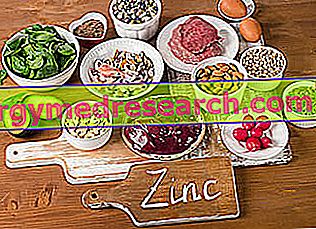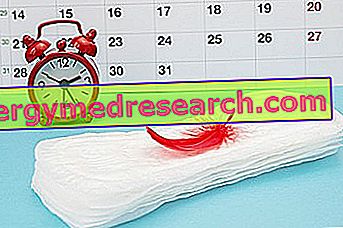
What is Copalia HCT?
Copalia HCT is a medicine containing three active substances, amlodipine, valsartan and hydrochlorothiazide, available as tablets containing amlodipine, valsartan and hydrochlorothiazide in the following doses: 5/160 / 12.5 mg, 10/160 / 12.5 mg, 5 / 160/25 mg, 10/160/25 mg and 10/320/25 mg.
What is Copalia HCT used for?
Copalia HCT is used to treat essential hypertension (high blood pressure) in adults whose blood pressure is already adequately controlled with a combination of amlodipine, valsartan and hydrochlorothiazide. The term "essential" indicates that hypertension has no obvious cause.
The medicine can only be obtained with a prescription.
How is Copalia HCT used?
One tablet of Copalia HCT should be taken orally, at the same time and preferably in the morning. The dose of Copalia HCT to be used is similar to the doses of the three active ingredients taken individually which the patient took previously. The daily dose of Copalia HCT should not
exceed 10 mg of amlodipine, 320 mg of valsartan and 25 mg of hydrochlorothiazide.
How does Copalia HCT work?
The three active ingredients of Copalia HCT are antihypertensive medicines already marketed in the European Union (EU). Amlodipine is a "calcium channel blocker", meaning that it blocks particular channels on the cell surface, called calcium channels, which normally allow calcium ions to enter cells. When calcium ions penetrate the cells of the musculature of the vascular walls, they cause a contraction. By reducing the flow of calcium in the cells, amlodipine inhibits the contraction of cells, favoring relaxation and enlargement of blood vessels and thus decreasing blood pressure.
Valsartan is an "angiotensin II receptor antagonist", meaning that it blocks the action of a hormone in the body called angiotensin II, which is a powerful vasoconstrictor (a substance that narrows blood vessels). By blocking the receptors to which angiotensin II normally attaches, valsartan blocks the effect of the hormone, allowing the blood vessels to dilate and reduce blood pressure.
Hydrochlorothiazide is a diuretic. It works by increasing urine excretion, reducing the volume of fluid in the blood and lowering blood pressure. The combination of the three active ingredients has an additional effect, reducing blood pressure to a greater extent than the three medicines taken individually. With reduced blood pressure, the risks associated with high blood pressure, such as having a stroke, decrease.
How has Copalia HCT been studied?
Since the combination of the three active ingredients has been marketed for several years, the manufacturer has presented studies showing that the tablet containing the three principles is absorbed into the body in the same way as the separate tablets.
Furthermore, one main study was carried out on 2 271 patients with moderate to severe hypertension
severe with the strongest dose of Copalia HCT (320 mg of valsartan, 10 mg of amlodipine and 25 mg of
hydrochlorothiazide). Patients were given Copalia HCT or one of three combinations containing only two active ingredients for eight weeks. The main measure of effectiveness was the reduction of blood pressure.
What benefit has Copalia HCT shown during the studies?
Treatment with the highest dose of Copalia HCT was more effective in treating hypertension than combinations containing any two of the active ingredients. The mean decrease in blood pressure was about 39.7 / 24.7 mmHg in patients who took Copalia HCT compared to 32 / 19.7 mmHg, 33.5 / 21.5 mmHg and 31.5 / 19.5 mmHg in patients who took the combinations valsartan / hydrochlorothiazide, valsartan / amlodipine and hydrochlorothiazide / amlodipine respectively.
What is the risk associated with Copalia HCT?
The most common side effects with Copalia HCT (seen in between 1 and 10 patients in 100) are hypokalemia (low blood potassium levels), vertigo, headache, hypotension (low blood pressure), dyspepsia (heartburn), pollakiuria (frequent urination), fatigue and edema (fluid retention). For the full list of all side effects reported with Copalia HCT, see the Package Leaflet.
Copalia HCT should not be taken by people who may be hypersensitive (allergic) to the active substances, other sulfonamides, dihydropyridine derivatives or any ingredient in Copalia HCT. It must not be used in women who have been pregnant for more than three months. Also, it should not be used in patients with liver or bile problems (such as jaundice), severe kidney problems, anuria (a condition in which the patient cannot produce or transit urine) or in patients undergoing dialysis (technique of blood purification). Finally, Copalia HCT should not be used in patients with hypokalemia (low blood potassium levels), hyponatremia (low blood sodium levels) and hypercalcaemia (high blood calcium levels) that do not respond to treatment and in affected patients from hyperuricemia (high levels of uric acid in the blood) which causes symptoms.
Why has Copalia HCT been approved?
The Committee for Medicinal Products for Human Use (CHMP) has found that patients already taking the three active substances are more likely to adapt to the treatment if they are prescribed Copalia HCT which combines the three active ingredients into a single tablet. The main study demonstrated the benefits of the higher dose of Copalia HCT in lowering blood pressure. For all doses, Copalia HCT has also been shown to be comparable to the combinations of active substances taken separately. The CHMP therefore decides that the benefits of Copalia HCT are greater than its risks for the treatment of essential hypertension in adults whose blood pressure is already adequately controlled with a combination of amlodipine, valsartan and hydrochlorothiazide. The committee recommended the granting of the marketing authorization for Copalia HCT.
Further information on Copalia HCT
On 4 November 2009, the European Commission granted a marketing authorization valid throughout the European Union to Novalia Europharm Limited.
For the full EPARIO of Copalia HCT, click here.
Last update of this summary: 08-2009.



